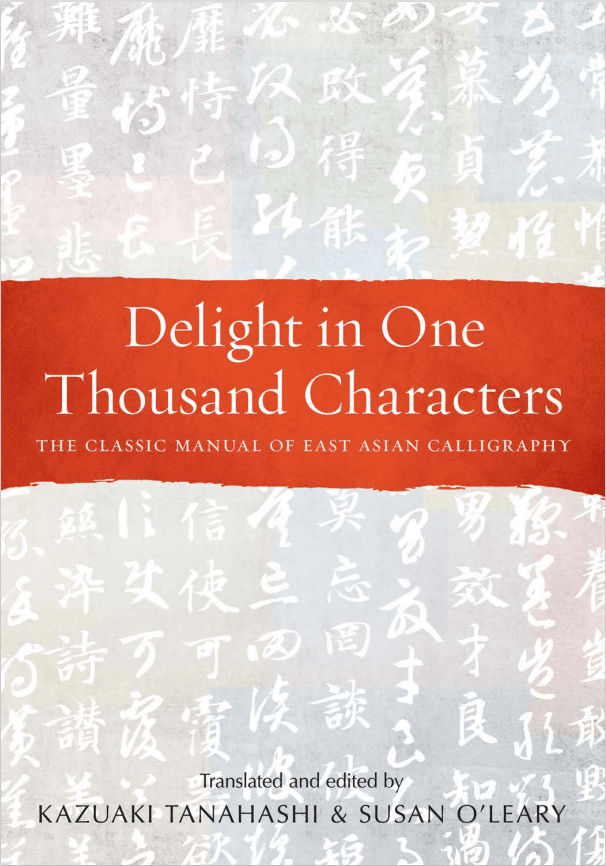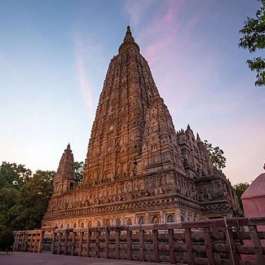Delight in One Thousand Characters: The Classic Manual of East Asian Calligraphy is Kazuaki Tanahashi and Susan O’Leary’s new edition of the One Thousand Character Essay. It is the go-to manual for almost all writers of Chinese, from accomplished calligraphers to students starting out on learning brush stroke sequences. It has shaped the social consciousness of East Asia in ways similar to how specific texts in the Greco-Roman, and then the Judeo-Christian spheres have influenced the West. In her introduction to this new edition of a seminal Chinese text, O’Leary describes the work as being a confluence of not only Confucianism, Buddhism, and Daoism in sixth-century China, but also the achievements of three figures: the “Sage of Calligraphy” Wang Xizhi (303–61), writer Zhou Xingsi (470–521), and the Buddhist monk and calligrapher Zhiyong (fl. sixth century).
The text comes to us in three stages: Wang Xizhi’s writings on calligraphic training (who was himself mentored by a woman called Lady Wei), Zhou Xingsi’s synthesis of Wang Shizhi’s thought into a “one-thousand single-use ideograph text,” (3), and its extant rendition by Wang’s seventh-generation descendant, Zhiyong. As O’Leary notes: “It is told that Zhiyong copied the One Thousand Character Essay eight hundred times in order to gift it to monasteries and calligraphers in the furtherance of literacy and art.” (xvii)
There are four extant versions of the One Thousand Character Essay by Zhiyong. One extant handwriting of this text is the Ogawa manuscript, which serves as the reference for this publication and is reproduced within. This version is recorded as having been a donated treasure to Todai Temple in Nara in 756, before being transferred to the imperial palace during the reign of Emperor Saga (786–842). It was designated a Japanese national treasure in 1953 and is now held by Masato Ogawa. However, there is also a 34-column fragment from the Mogao Caves, Dunhuang, which is dated to 641 and owned by the French National Museum, as well as a rubbing of stone carved in 1109 in Chang’an, now known as the Guanzhong manuscript. Finally, the Baomoxuan manuscript is a rubbing of a stone carving that takes its name from the “Precious Ink Chamber” built by Wen Gonggong (1538–88) to store his riches. The original is now lost, but it was carved in stone—by whom we do not know—and the rubbing of that carving is what we are left with. (13–14)
If certain texts represent the “fulfilment” of certain philosophical and theological traditions—similar to what Dante’s Divine Comedy did for Italian literature or Ulysses for modernist writing—the One Thousand Character Essay is the synthesis of Chinese philosophy expressed as calligraphy, itself a distinct way of not only writing, but of thinking and even living. In other words, the calligraphic instructions are the philosophy, the mechanism through which the profoundest realizations of the Chinese sage are realized:
The heavens are black, earth is ochre. Space is vast, time limitless. . . .
Women admire the chaste. Men follow the example of those who are virtuous and good. . . .As you assist your father and serve your lord, see this as rigorous and reverential.
Strive for filial piety and devote your life to loyalty. . . .Your look and figure should be thoughtful. Your speech, easy and calm.
To be sincere at the beginning is beautiful. To be attentive at the end is even more honorable. . . .Friends with similar aspirations become intimate. You polish and refine each other. . . .
(29 – 31)
Maintain truth, and your aspirations will be fulfilled. If you pursue the material world, your mind will be deluded.
These are only some of the ideograms that, as far as Wang Xizhi was concerned, embodied Chinese civilization. The book in question functions as a beginner’s manual for aspiring calligraphers. Strikingly, the One Thousand Character Essay barely contains any references to Buddhism—it seems to belong to a canon of texts that do not see the once-foreign faith as an integral part of China’s civilizational values. This is despite the fact that Zhou Xingsi wrote the text for Emperor Wu of Liang (r. 502–49), who famously boasted to none other than Bodhidharma that he was a servant of the Three Treasures. He not only ordered the ordination of a great number of monks and nuns, but also modelled himself as a chakravartin and a great protector of Buddhism, and presided over more than 700 temples in Jiankang. (4) It is also ironic that Zhiyong, a clergyman of the Dharma, would be the one to faithfully save and transmit the dual legacy of Wang and Zhou. O’Leary credits Zhiyong with having accomplished something similar to the Christian chroniclers when the Vikings were plundering Christian monasteries and burning Bibles.
In ancient times (and among those who fancy themselves cultural aficionados), calligraphy was ranked among poetry and painting as an activity that distinguished members of the literati. In the complex story of One Thousand Character Essay, the calligrapher’s art was combined with sacred tones of Buddhist principles, although the latter is subtle. The content is at heart Confucian: as Tanahashi’s introduction notes:
The values advocated in the text reflect the morals of East Asian feudal society, centering around monarchs, government officials, and males. Many of us today may be happy that we are no longer living in such a society—but we may still find fascination in understanding how the text was affected by, and in return affirmed, certain social values.
(20)
While it is true that we no longer live in feudal times, this work has punched far above its weight by exerting an outsize influence on Chinese society. It is one of the only comprehensive and extant texts on calligraphic instruction, and is still used now by calligraphers and students in China. Furthermore, this edition of Wang/Zhou/Zhiyong’s text is unique for the credit O’Leary gives to Lady Wei, which is a welcome rebalancing of in the face of three men. Lady Wei is nothing less than Wang’s mentor, her pedagogical legacy manifested in the brush’s strokes. She broke down Chinese ideograms into the seven basic strokes still referred to today, and she made the striking point that brushstrokes were more bone than flesh. O’Leary tributes her as such: “She studied movement in nature and wanted her dot stroke to have the force of a stone falling from a cliff. She saw the grace and strength of old rattan leaning against a tree and it became the model for her vertical stroke with hook.” (xvii) Her mentorship of Wang set the foundation for Zhou’s eventual adoption of 1,000 characters to define and represent Chinese culture of his time. With so many yet so few choices that must be chosen consciously and critically, the final categories were truly profound: history; nature; self-mastery and discipline; good conduct and conformity; hierarchy and social relations; solitary life and intimate affairs of the person; the meaning of words and grammar.
Shambhala has made a magnificent choice in bringing this text to mainstream focus, and hopefully it will be appreciated on its own terms, as a one-of-a-kind masterpiece, a blend of multiple unique people and historical conditions that enabled the Chinese language to express the deepest realities.
References
Tanahashi, Kazuaki and O’Leary, Susan (eds. and trans). 2022. Delight in One Thousand Characters: The Classic Manual of East Asian Calligraphy. Boulder: Shambhala Publications.
Related news from BDG
Archeologists Unearth China’s Earliest Bronze Buddhist Statues To Date
Related features from BDG
Book Review: Xuanzang: China’s Legendary Pilgrim and Translator
Book Review – China Root: Taoism, Chan, and Original Zen














